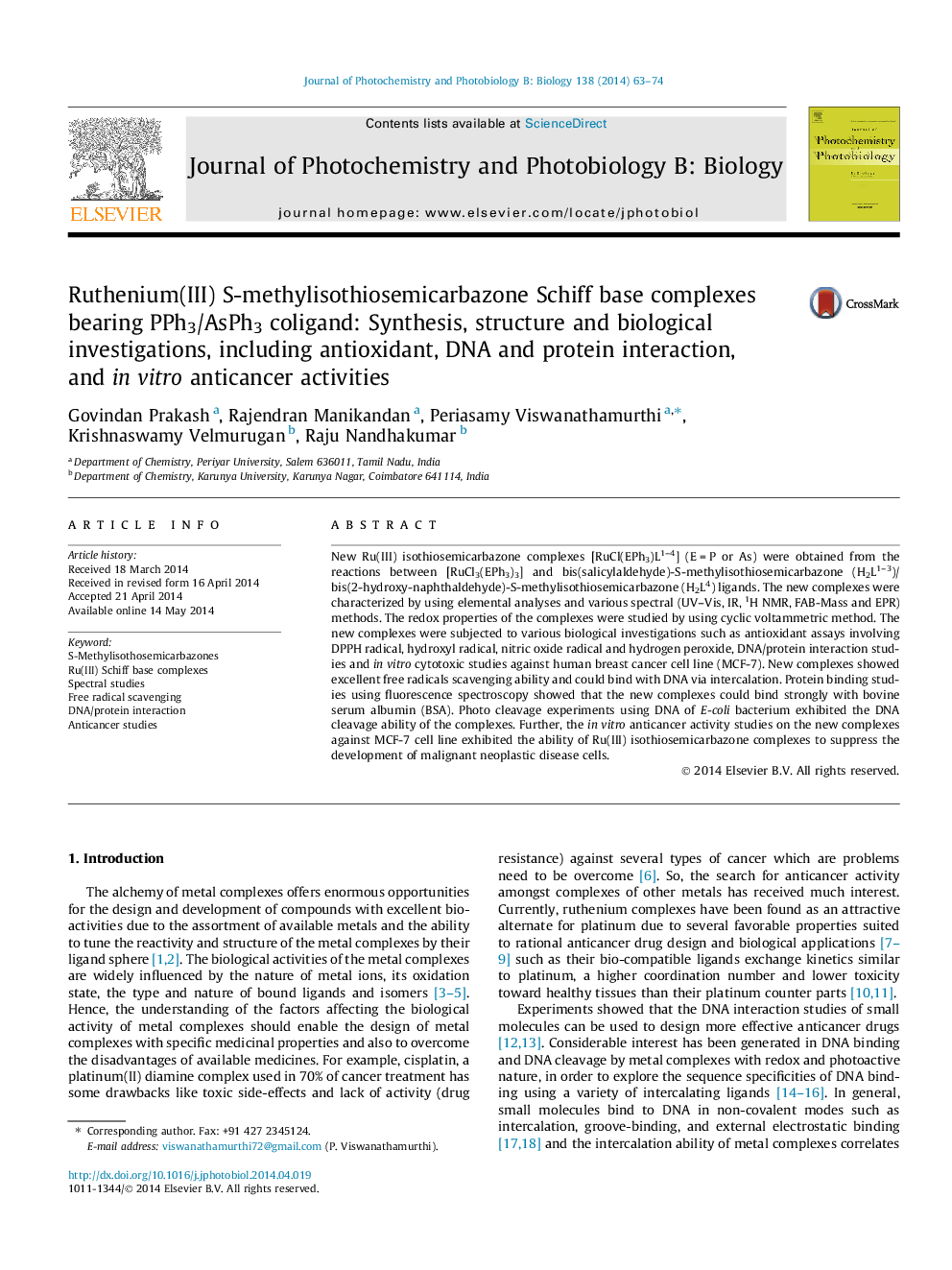| Article ID | Journal | Published Year | Pages | File Type |
|---|---|---|---|---|
| 30283 | Journal of Photochemistry and Photobiology B: Biology | 2014 | 12 Pages |
•A series of ruthenium(III) isothiosemicarbazone complexes was synthesized and characterized.•Radical scavenging ability of the complexes against DPPH, OH, NO and H2O2 were tested using UV spectrophotometer.•DNA and protein interaction of the complexes were investigated using fluorescence spectroscopy.•Invitro anticancer activity of the new complexes was analyzed against MCF-7 cell line.
New Ru(III) isothiosemicarbazone complexes [RuCl(EPh3)L1–4] (E = P or As) were obtained from the reactions between [RuCl3(EPh3)3] and bis(salicylaldehyde)-S-methylisothiosemicarbazone (H2L1–3)/bis(2-hydroxy-naphthaldehyde)-S-methylisothiosemicarbazone (H2L4) ligands. The new complexes were characterized by using elemental analyses and various spectral (UV–Vis, IR, 1H NMR, FAB-Mass and EPR) methods. The redox properties of the complexes were studied by using cyclic voltammetric method. The new complexes were subjected to various biological investigations such as antioxidant assays involving DPPH radical, hydroxyl radical, nitric oxide radical and hydrogen peroxide, DNA/protein interaction studies and in vitro cytotoxic studies against human breast cancer cell line (MCF-7). New complexes showed excellent free radicals scavenging ability and could bind with DNA via intercalation. Protein binding studies using fluorescence spectroscopy showed that the new complexes could bind strongly with bovine serum albumin (BSA). Photo cleavage experiments using DNA of E-coli bacterium exhibited the DNA cleavage ability of the complexes. Further, the in vitro anticancer activity studies on the new complexes against MCF-7 cell line exhibited the ability of Ru(III) isothiosemicarbazone complexes to suppress the development of malignant neoplastic disease cells.
Graphical abstractFigure optionsDownload full-size imageDownload as PowerPoint slide
